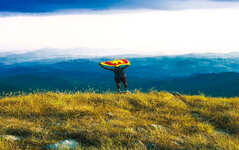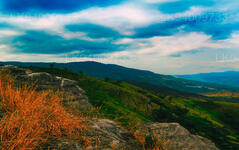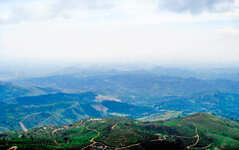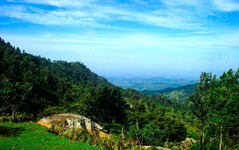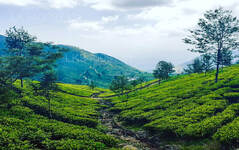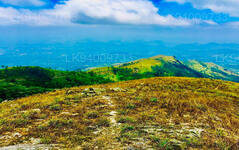
Bandarawela City
Escape to the scenic highlands of Bandarawela, where our welcoming retreat invites you to experience serenity and adventure. Enjoy breathtaking views, explore tea estates, and immerse yourself in the rich culture of this charming hill town. Your idyllic retreat in Bandarawela awaits
Poonagala Hills
The Poonagala Hills are a range of low lying hills in the Central Highlands of Sri Lanka. Whilst quite beautiful by themselves, with rolling green fields of tea, pretty flowers and colorful tea pluckers; the area gains its fame due to four very specific viewpoints known for the amazing views of the island. These viewpoints Pilkington Point, Millennium Point, Lipton’s Seat, and St. Catherine’s Seat; while already known by locals from many centuries ago; became known globally as popular sightseeing locations during the era of the British tea planters over a century and half ago. The hills also coset other interesting prizes such as the Diyaluma Falls fed by Poonagala Oya and the Dambatenna Tea Estate
Pilkington Point
Pilkington Point gained its name in 1898 from Sir George Pilkington, the first manager Poonagalla Group, who used this location to scan the vast tea estate of Poonagala in late 1800’s. The viewpoint lies 1400m above sea level in the Haputale – Bandarawela region. To get to Pilkington Point, involves a one hour walk (or few minutes drive) up a marked trail off the Bandarawela-Koslanda Road. This road starts from the little town of Koslanda and passes through the hills of Poonagala. You will have to pay a little fee at the entrance gate to the viewpoint. The vista give an unprecedented view all the way to the Southern Coast. The districts of Monaragala, Hambanthota, Rathnapura and a part of Ampara are visible. Some of the more identifiable landmarks include Wellawaya, the Kiri Vehera Temple of Kataragama, Embilipitiya and Udawalawe.
Millenium Point
Millenium Point lies not far above Pilkington point and can only be reached by foot. While some of the locals say that it can be reached by vehicles, it is not advised to do so; mainly due to the uneven, narrow trail close to sharp slopes with no space to turn around. There is also the fact that Millennium Point is often visited by wild elephants and boars that are quickly agitated by vehicles. In fact, these larger wild life are to be avoided as a whole if seen, to prevent dangerous incidents. The climb unto Millennium Point takes about three quarter of an hour and the views are even better than Pilkington Point. The viewpoint offers a 350 degree view of the surrounding landscape; including all the locations that can be seen from Pilkington Point and more. Whilst the viewpoint has a water source it is not very potable; and you are advised to take your own water bottle.
Lipton’s Seat
Lipton’s seat is another impressive viewpoint in the Dambatenna Estate amongst the Poonagala Hills standing at an elevation of 1900m above sea level. It received its name from the Scottish Tea baron Sir Thomas Lipton; who used the location to survey the many hundreds of acres of his empire in the late 1800s. His tea estate and factory remain to this day, albeit with a somewhat changed name. Lipton Ceylonta Tea is also one of the most famous top quality tea brands manufactured in Sri Lanka. The viewpoint can be reached by vehicles, or by hiking 8km through lush tea plantations. Sunrise and early morning gives some of the best and most dramatic views of the Uva, Southern, Sabaragamuwa, Central and Eastern provinces; with the rolling green hills and valleys of tea spreading below the viewpoint. The place also has a statue of Sir Lipton that visitors can pose with for photographs; while a tiny teashop sells excellent Lipton Ceylonta Tea, both fresh brews and tea leaf packets to take home as souvenirs.
St. Catherine’s Seat
St. Catherine’s seat is another viewpoint not far from Lipton’s Seat that stands at the same height and gained popularity during the British Colonization period. It is located in the upper reaches of the Nayabedda Tea Estate and can be reached from a vehicle. Not much is known about the origins of its name. St Catherine’s seat provides a magnificent view of Bandarawela, Diyatalawa and the surrounding mountains.
Diyaluma Falls
Diyaluma is one of the tallest waterfalls of Sri Lanka. It falls down a giant rocky vertical drop in a narrow stream; and is located in the Poonagala Hills. The Falls consist of two separate waterfalls; the Upper Diyaluma which is comparatively smaller and the Lower Diyaluma with its vertical drop. The Upper Falls can be viewed by traveling down the Poonagala – Koslanda Road and turning onto Makaldeniya Road. From there one would have to hike for a few minutes to reach the base of Upper Diyaluma. There is a trail that allows to hike up to the head of the Falls as well. However, caution should be exercised; for this deceptively small falls hides extremely deep rock pools at its base, that have drowned several incautious travelers. From the base of the Upper Diyaluma Falls, it is possible to visit the head of the Lower Diyaluma which is a great viewpoint as well.
Dambatenna Tea Factory
This factory processes the tea from the Dambatenna Tea Estate; and its worth dropping by when visiting Lipton’s Seat which lies in the same estate. The factory is surrounded my an immaculate lawn with many species of colorful flowers; that make for some nice photographs. While unlike some of the other factories, this place charges a small fee, their tea tour is quite detailed; with plenty of information about tea processing and the identification of the various types of tea.
About Badulla District
Badulla is the capital of Uva Province in Sri Lanka. Badulla is located on the southeast of Kandy, almost encircled by the Badulu Oya River, about 680 meters (2200 ft) above sea level and is surrounded by tea plantations. The town is overshadowed by the Namunukula range of mountains. Badulla is about 230km away from Colombo towards the eastern slopes of central hills of Sri Lanka.
Badulla and surroundings are highly recommended for eco-tourists as Horton Plains National Park and the Knuckles mountains are few hours away.
Special places in Badulla: Muthiyangana temple, Dhowa temple, Bogoda ancient wooden bridge, Rawana water falls
About Uva Province
The Uva Province is Sri Lanka's second least populated province, with 1,187,335 people, created in 1896. It consists of two districts called Badulla and Monaragala The provincial capital is Badulla. Uva is bordered by Eastern, Southern and Central provinces. Its major tourist attractions are Dunhinda Falls, Diyaluma Falls, Rawana Falls, the Yala National Park (lying partly in the Southern and Eastern Provinces) and Gal Oya National Park (lying partly in the Eastern Province). The Gal Oya hills and the Central Mountains are the main uplands, while the Mahaweli and Menik rivers and the huge Senanayake Samudraya and Maduru Oya Reservoirs are the major waterways in Uva province.

